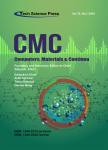Industrial Fusion Cascade Detection of Solder Joint
作者机构:Chongqing School University of Chinese Academy of Sciences Chongqing University Chongqing 400044 China Automatic Reasoning and Cognition Research Center Chongqing Institute ofGreen and Intelligent Technology Chinese Academy of Sciences Chongqing 400714 China College of Artificial Intelligence Chongqing School University of Chinese Academy of Sciences Chongqing 400714 China Design Department Liuzhou Fuzhen Bodywork Industrial Co. Ltd. Liuzhou 545006 China
出 版 物:《Computers, Materials and Continua》 (计算机、材料和连续体(英文))
年 卷 期:2024年第81卷第1期
页 面:1197-1214页
核心收录:
学科分类:08[工学] 0812[工学-计算机科学与技术(可授工学、理学学位)]
基 金:National Key Research and Development Program of China, NKRDPC, (2023YFA1009402) General Science and Technology Plan Items in Zhejiang Province, (ZJKJT-2023-02)
主 题:Cascade object detection deep learning feature fusion multi-scale and multi-template matching solder joint dataset
摘 要:With the remarkable advancements in machine vision research and its ever-expanding applications, scholars have increasingly focused on harnessing various vision methodologieswithin the industrial realm. Specifically, detecting vehicle floor welding points poses unique challenges, including high operational costs and limited portability in practical settings. To address these challenges, this paper innovatively integrates template matching and the Faster RCNN algorithm, presenting an industrial fusion cascaded solder joint detection algorithm that seamlessly blends template matching with deep learning techniques. This algorithm meticulously weights and fuses the optimized features of both methodologies, enhancing the overall detection capabilities. Furthermore, it introduces an optimized multi-scale and multi-template matching approach, leveraging a diverse array of templates and image pyramid algorithms to bolster the accuracy and resilience of object detection. By integrating deep learning algorithms with this multi-scale and multi-template matching strategy, the cascaded target matching algorithm effectively accurately identifies solder joint types and positions. A comprehensive welding point dataset, labeled by experts specifically for vehicle detection, was constructed based on images from authentic industrial environments to validate the algorithm s performance. Experiments demonstrate the algorithm s compelling performance in industrial scenarios, outperforming the single-template matching algorithm by 21.3%, the multi-scale and multitemplate matching algorithm by 3.4%, the Faster RCNN algorithm by 19.7%, and the YOLOv9 algorithm by 17.3% in terms of solder joint detection accuracy. This optimized algorithm exhibits remarkable robustness and portability, ideally suited for detecting solder joints across diverse vehicle workpieces. Notably, this study s dataset and feature fusion approach can be a valuable resource for other algorithms seeking to enhance their



